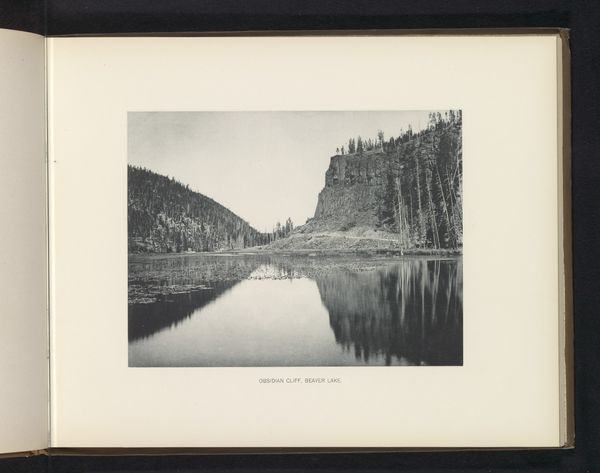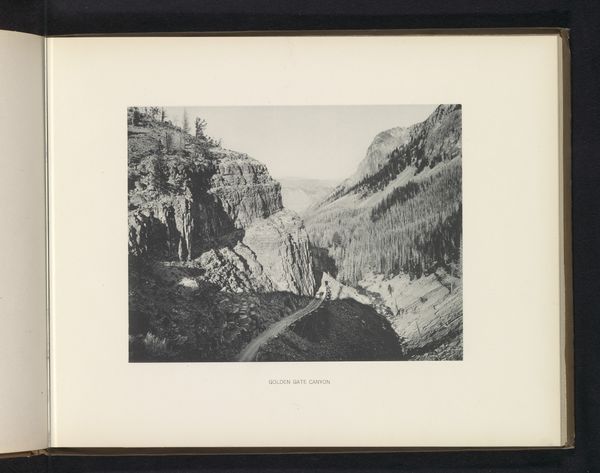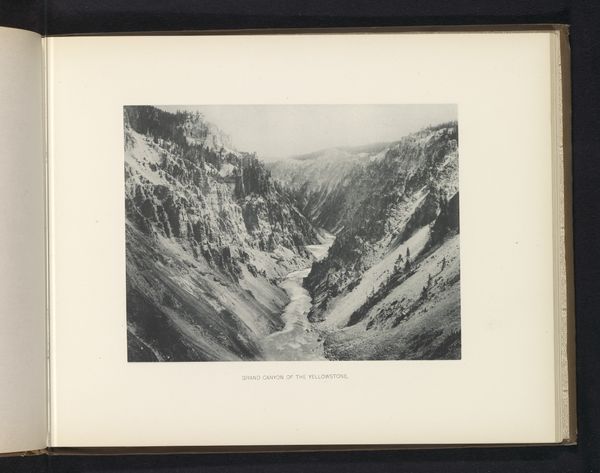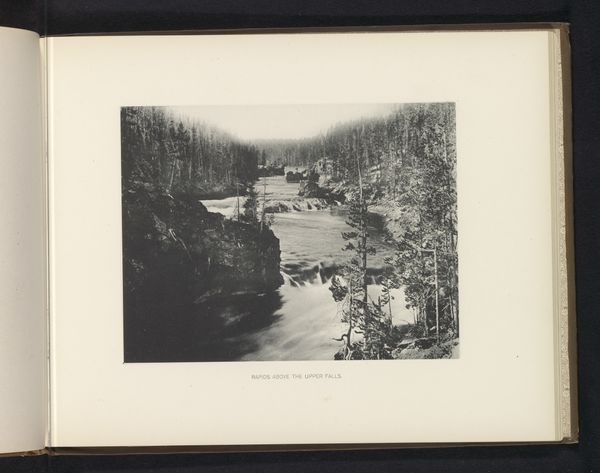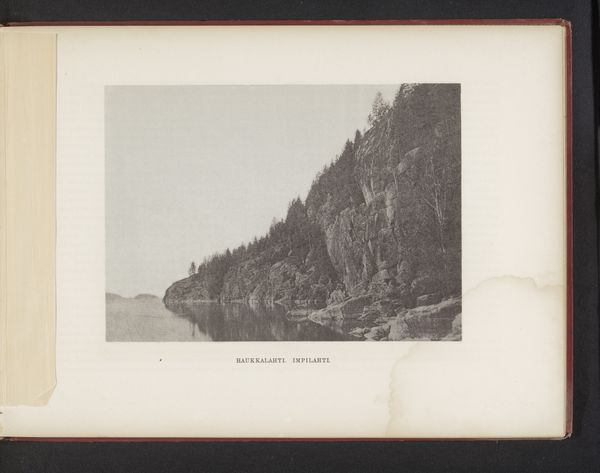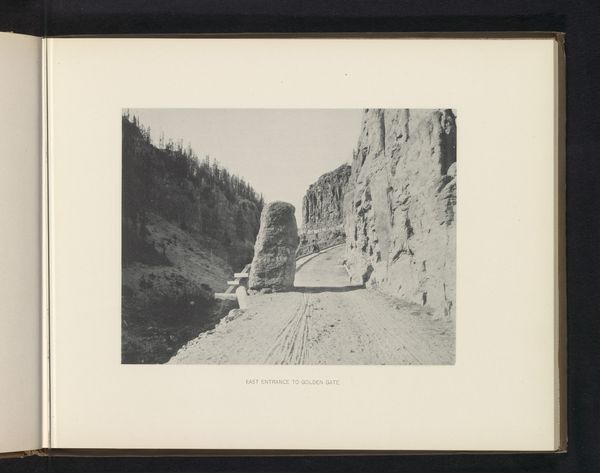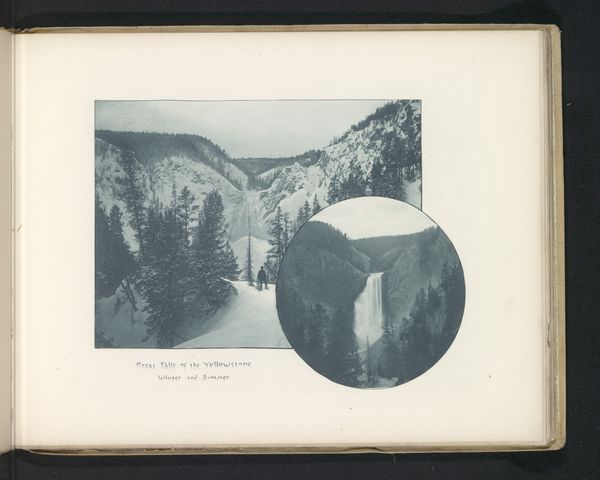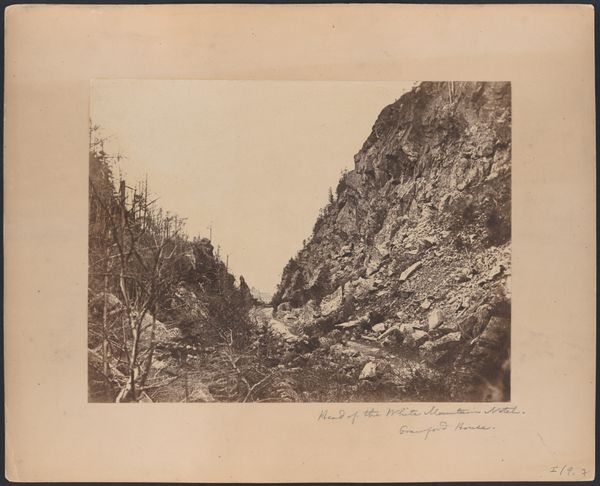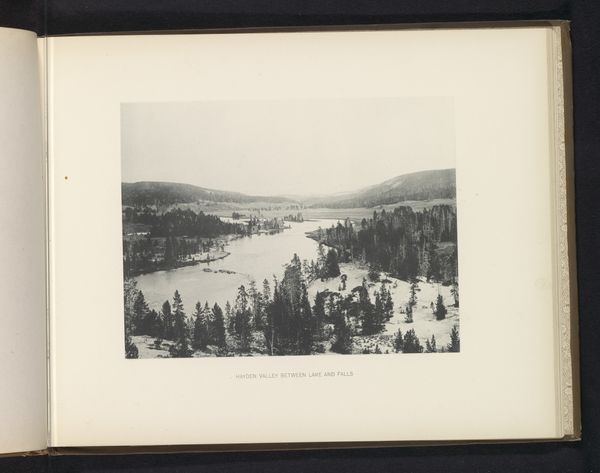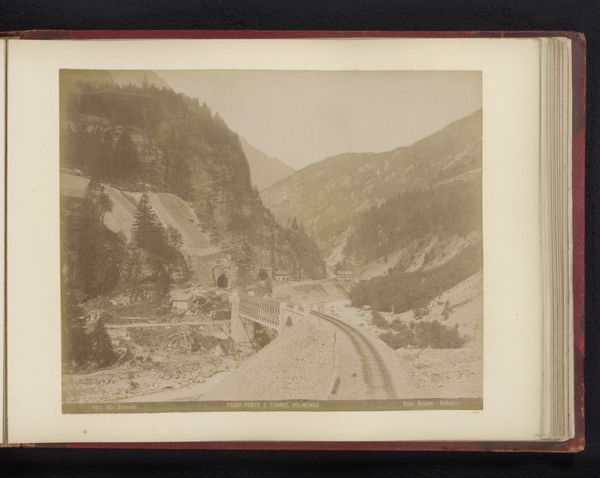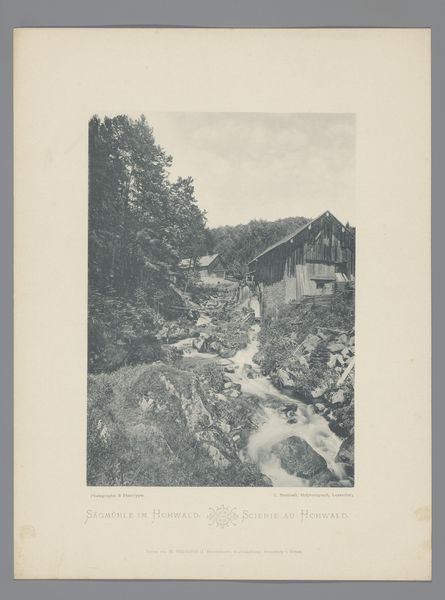
Dimensions: height 163 mm, width 216 mm
Copyright: Rijks Museum: Open Domain
Curator: This photograph, entitled "Gibbon Canyon and River," was taken by Frank Jay Haynes sometime before 1891. Editor: Immediately striking is the overwhelming verticality, countered only by the path forged into the wilderness in the foreground. It creates an immediate tension between man’s mark and the untouched landscape. Curator: Exactly! The linear composition emphasizes that very interplay. Note how the trees act as vertical pillars, framing the river and canyon, guiding the eye upwards toward the towering rock face. Editor: Given Haynes' context, working during a period of intense expansion and conservation debates, do you think that the work intends to highlight that contrast between control and untamed nature? Perhaps the path’s presence speaks volumes about America’s ambitions. Curator: I find the play of light here particularly engaging. The textures within the grayscale capture form, carving out details in the rock face and reflecting off the river’s surface. There’s a rich range of tones within the restricted palette. Editor: Thinking historically, photographs like these were crucial for popularizing the West and influencing policy. Imagine the impact of this image on someone who had never seen anything like this. Did the sublime vision of nature impact views and opinions about the land? Curator: Absolutely. This work echoes the Hudson River School in its romantic depiction, though utilizing photography. It romanticizes that view for mass consumption. Editor: Ultimately, "Gibbon Canyon and River" presents us with a tangible record of a crucial period of negotiation with the American landscape, visually shaping our perceptions even now. Curator: And the carefully considered composition certainly reinforces the powerful narrative embedded within this seemingly straightforward landscape photograph.
Comments
No comments
Be the first to comment and join the conversation on the ultimate creative platform.
